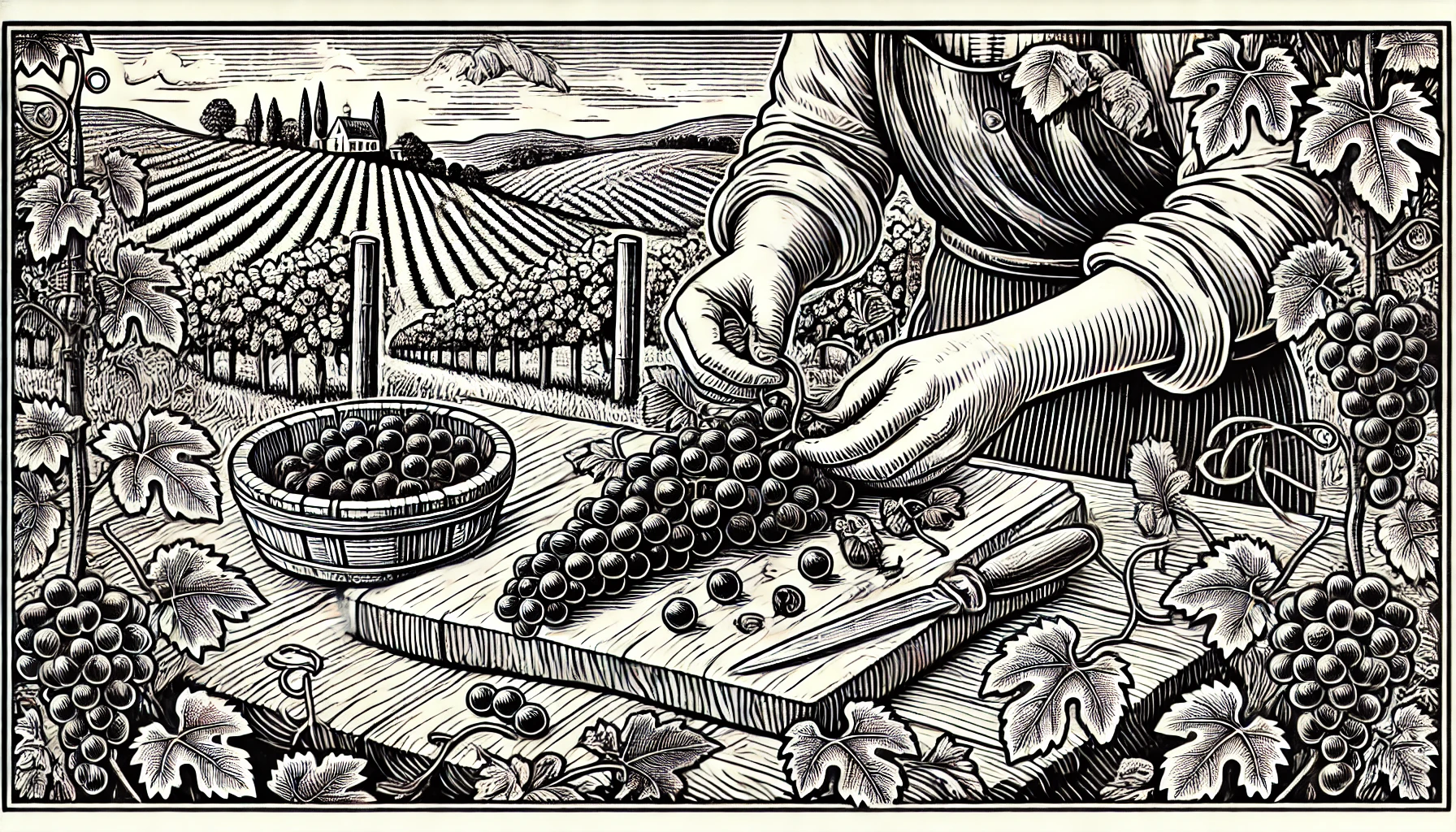
Destemming is the process of removing the stems from grape clusters before fermentation. In winemaking, destemming plays a critical role in controlling the wine’s tannin levels and overall flavor profile. Stems contain tannins, which can contribute bitterness or astringency to wine if left during fermentation. While tannins are an essential part of a wine’s structure, too many tannins from stems can overpower the wine’s other characteristics, resulting in an unbalanced product.
Winemakers often use destemming for red wines, but it can also be done in white wine production. The decision to destem or not depends on the style of wine the winemaker aims to create. Some winemakers choose to ferment grapes with the stems, a technique known as whole-cluster fermentation. This method can add complexity and structure to the wine but also introduces more tannins, which need to be managed carefully.
The destemming process can be done by hand or with mechanical destemmers. In small-scale or artisanal winemaking, hand-destemming is sometimes preferred because it allows more control over the selection of grapes. However, in large-scale commercial wineries, mechanical destemmers are used for efficiency. These machines remove the stems from the grapes while keeping the grape skins intact, which is crucial for the fermentation process.
Destemming also affects the texture and mouthfeel of the wine. Removing stems tends to create wines that are smoother and more approachable when young. Wines made without destemming often require longer aging to soften the tannins. While destemming adds an extra step to the winemaking process, it gives winemakers greater control over the final product, allowing them to create wines with the desired balance of fruit, acidity, and tannin.
Curious about more wine terms and insights? Visit our Wine Wiki section and explore the basic wine terms for expert definitions and tips!